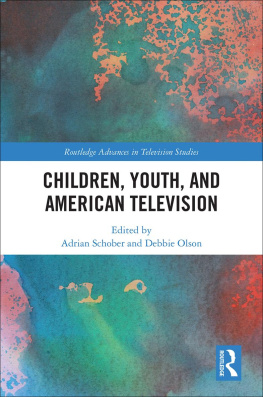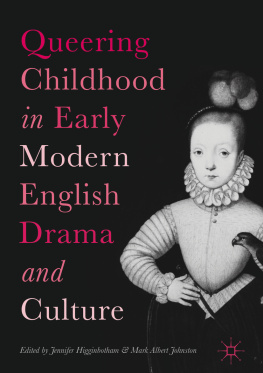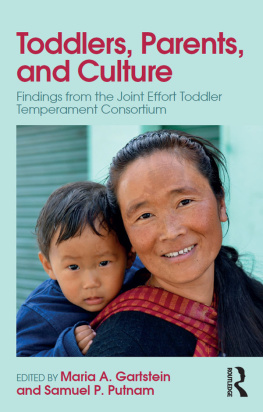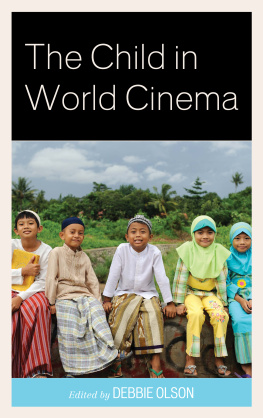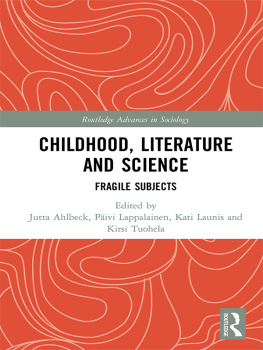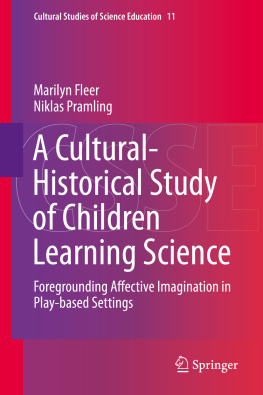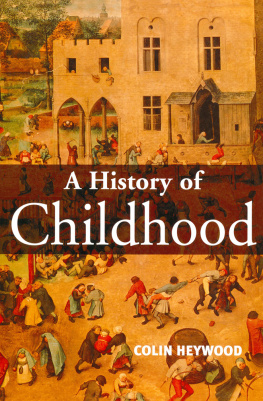The Cultural Construction of Monstrous Children
The Cultural Construction of Monstrous Children
Essays on Anomalous Children from 1595 to the Present Day
Edited by
Simon Bacon and Leo Ruickbie
Anthem Press
An imprint of Wimbledon Publishing Company
www.anthempress.com
This edition first published in UK and USA 2020
by ANTHEM PRESS
7576 Blackfriars Road, London SE1 8HA, UK
or PO Box 9779, London SW19 7ZG, UK
and
244 Madison Ave #116, New York, NY 10016, USA
2020 Simon Bacon and Leo Ruickbie editorial matter and selection;
individual chapters individual contributors
The moral right of the authors has been asserted.
All rights reserved. Without limiting the rights under copyright reserved above,
no part of this publication may be reproduced, stored or introduced into
a retrieval system, or transmitted, in any form or by any means
(electronic, mechanical, photocopying, recording or otherwise),
without the prior written permission of both the copyright
owner and the above publisher of this book.
British Library Cataloguing-in-Publication Data
A catalogue record for this book is available from the British Library.
Library of Congress Control Number: 2020940783
ISBN-13: 978-1-78527-520-3 (Hbk)
ISBN-10: 1-78527-520-8 (Hbk)
This title is also available as an e-book.
CONTENTS
| Simon Bacon and Leo Ruickbie |
| Joyce Froome |
| Renaud Evrard |
| Leo Ruickbie |
| Gerd H. Hvelmann |
| Jen Baker |
| Anthony Adams |
| Simon Bacon |
| Allison Moore |
| Anna Krchy |
| Marc Dmont |
| Nicholaj de Mattos Frisvold |
| Jacquelyn Bent and Theresa Porter |
| Brigid Burke |
| Gerhard Mayer and Anita Brutler |
It has been something of an odyssey to get the important work of the authors involved in this project out into the light of day, and many thanks to those that have helped and encouraged along the way. The most important of these is my always amazing Mrs Mine and our own two little monsters, Seba and Majki, and not least the support of Mam i Tata Bronk.
Simon Bacon and Leo Ruickbie
The linkage between children and horror, or horror-full children, would seem an almost natural connection to make given its popularity in contemporary horror films and novels. However, the intersection between the two categories has a long history going back beyond the more obvious Gothic reimaginings of the nineteenth century with its underage ghostly terrors revealing that the idea of the little horror is seemingly an inherent demarcation within society between adults and those that are viewed as not adults. Beginning from the sixteenth century, this collection will consider examples of description and interpretation of little horrors from real life and popular culture to show the construction and consolidation of the Western cultural anxiety around the problematic, anomalous child which views it as being monstrous, dangerous and just plain evil.
Horror films, literature, games and graphic novels abound with evil babies, children and adolescents, so much so that Steven Bruhm notes, These days, when you leave the theatre after a fright-movie you cant go home again [] because youre afraid that your child to be cherished and protected to a manipulative, consuming predator to be exploited and broken.
The ongoing ambiguity in the attempts to define and regulate
The child in the nineteenth century children have become increasingly important elements of more sensational stories. It should be noted here that this collection will largely consider examples that feature children as central protagonists rather than works or texts that are produced by children or specifically for children, mainly because the anxieties of a given group or society are more clearly seen in cultural productions about the focus/object of those insecurities than in the works/texts produced by or for those that cause said anxieties.
This process then reveals how the stereotypes associated with troublesome or anomalous
1. The Anomalous Child
In considering anomalous
In many ways the Victorian period focused this otherness more tightly, just as it increasingly defined the child and its place under the intellectual and moral stewardship of adults. With increased industrialization the use of children in factories also grew as families moved from the countryside to the cities for work. While the moves to regulate this and protect the young from the unacceptable working conditions is seen as a largely philanthropic endeavour initiated by certain wealthy individuals such as John Fielden and Lord Ashley, the seventh Earl of Shaftsbury, it can equally be seen as a way to separate and control a part of society. Thus, while such protection can be viewed in terms of preventing exploitation (psychologically, physically and sexually) by outside forces, it also becomes a way of enforcing controls and conditions upon humans of a certain age group or maturation whether they want them or not. Alongside this, the prioritization of parental control over the agency of the individual child allows for the society of adults to project their hopes, desires and anxieties upon the ideological body of the young. Nostalgia forms much of this projection and is very much seen in the work of the golden age of childrens literature and authors such as Lewis Carroll, Robert Louis Stevenson and Rudyard Kipling (and the slightly later J. M. Barrie) highlighting how the category of the child is not one that is defined by those that are actually contained within it, but by those who impose ideals upon them. This, of course, is not just in terms of social position, but also in regard to sexuality and the sexualization of children. As noted in the work of James Kincaid, the child on the cusp of puberty becomes the figure upon which patriarchal society could project all its repressed sexual desires and fantasies. Simultaneously, as Andrew OMalley observes regarding Victorian society:
If the ideal figure of the age was the productive, moral, self-disciplined, healthy, male adult governed by the faculty of reason, the child
Here the child, whether male or female, embodied everything that the adult male was not. In this way, childhood, as previously mentioned, becomes an ambivalent category, supposedly embodying all that is good in a society, while also simultaneously becoming a dark mirror, revealing what is purposely kept secret. From this, Kincaid sees the child as an unformed or undecided individual, inevitably becoming radically ambivalent, even dangerous, and whose socialization becomes ever more imperative, not only for its own safety, but for society at large. Simultaneously then, what is represented as a means of protection for a nations most valuable asset can also be seen as a way of maintaining a cultures universal sense of self-innocence and goodness above and beyond an individuals personal choice (gender/ethnicity/geography). This has further wide-ranging implications for the way in which other categories are increasingly defined and controlled through the ways in which they are allowed to interact with and influence the child. Consequently, the protection of the child can also be a way to influence and regulate certain categories of adults, parents, businesses and even politico-legal systems in the kinds of relationships emotional, physical and economical that they are allowed to engage in with children.


